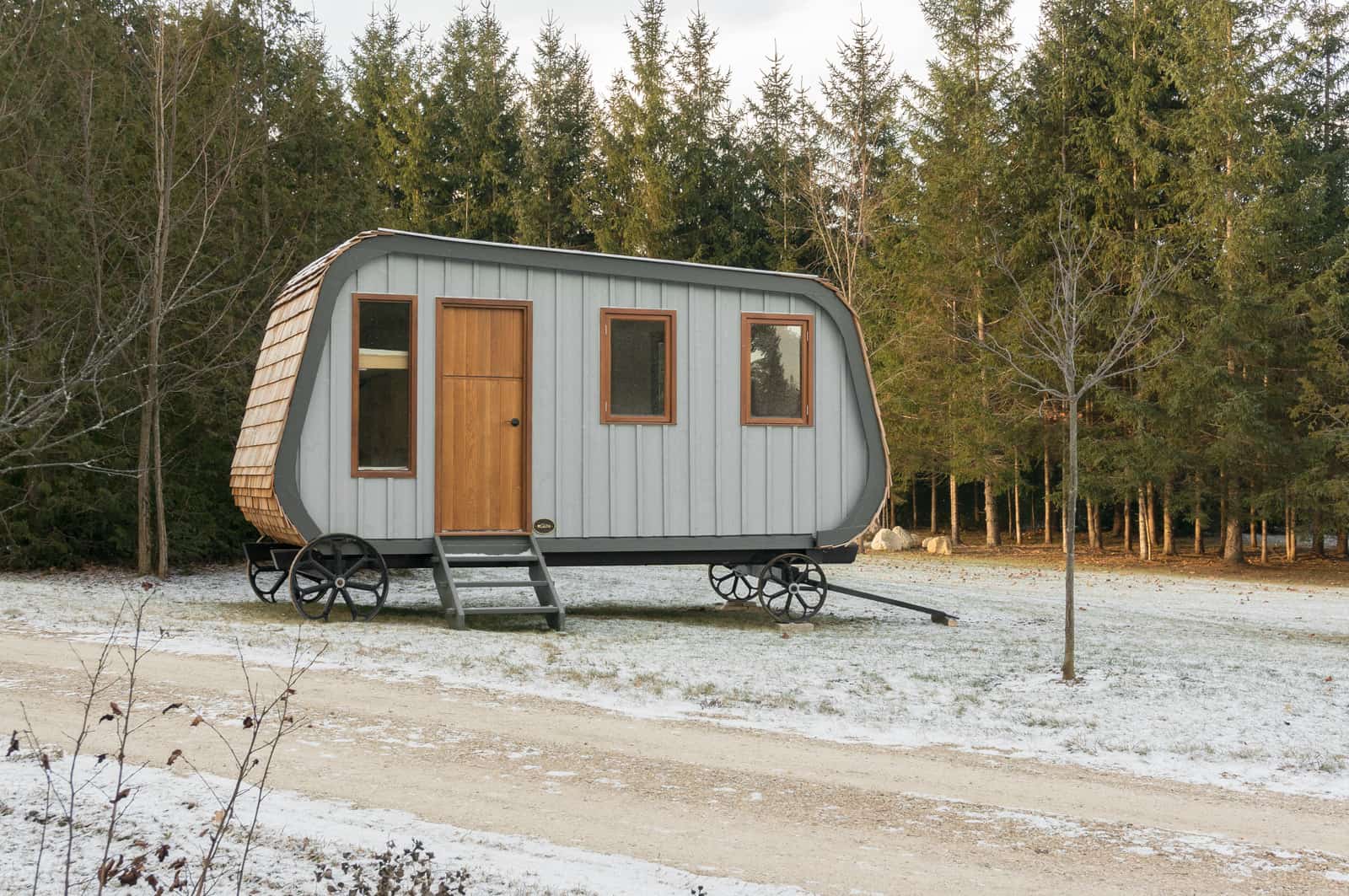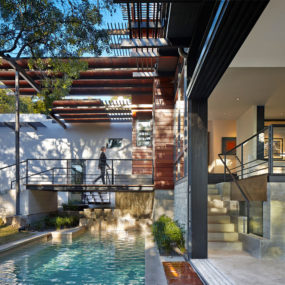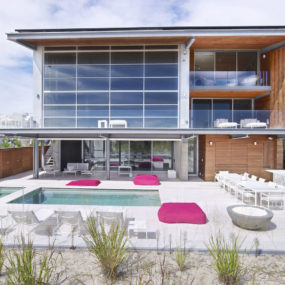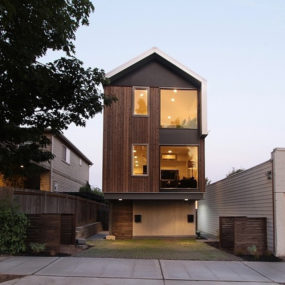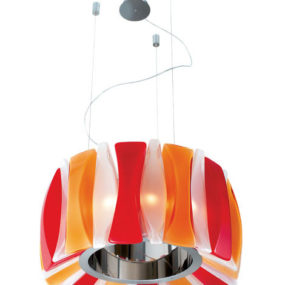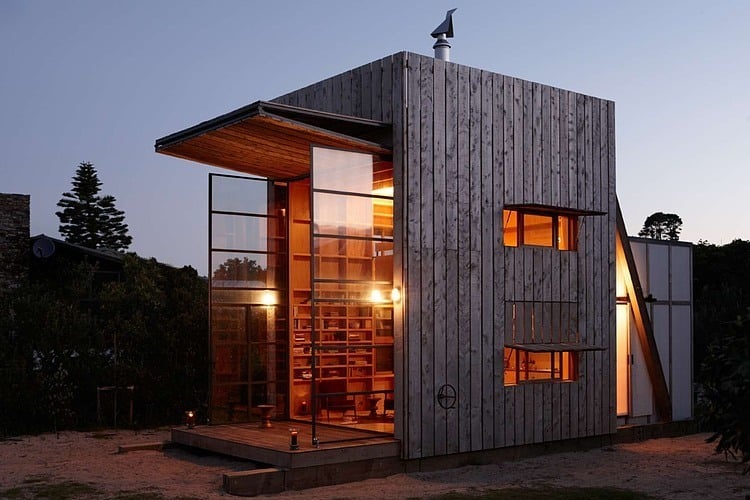
The Beach Hut was designed by Crosson Architects to fit within the areas requirements that all buildings in the locale must be removable due to the coastal erosion zone they occupy. The zone is within an idyllic white, sandy beach on the shores of New Zealand’s Cormandel Peninsula and the beach hut is a holiday retreat that client’s wanted to be able to close up against the elements when not in use. The architects accomplished these requirements by building the hut on a pair of two thick wooden sleds for easy movability either up the site or down to the waterline and onto a barge. The hut is designed to be a pair of cubes with large wooden shutters that accordion up and out of the way when occupied, and close up tight when the home is empty. Behind the wood window treatments are glazings that can be closed or opened depending on the weather and when they are open, the Beach Hut presents an indoor/outdoor lifestyle, perfect for a beach side setting.
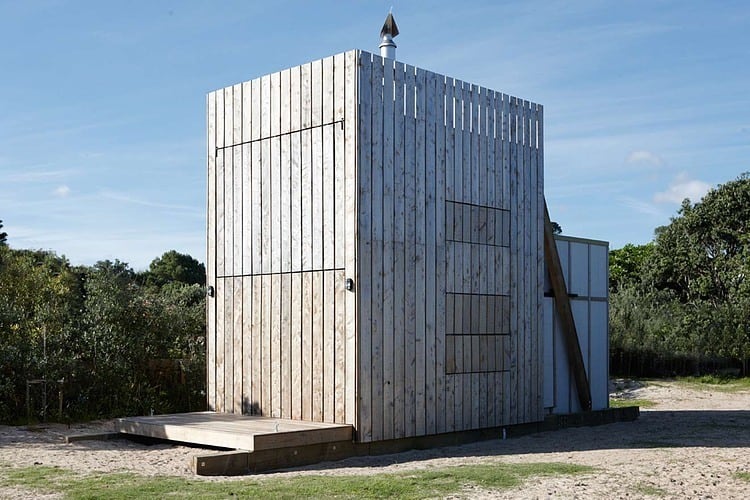
The vertical siding that has been used to wrap the holiday hut has naturally weather into a soft silvery grey patina that blends harmoniously with the sandy landscape and when all the windows and doors are closed up tight, the home presents an image of a wooden structure at peace with its surroundings.
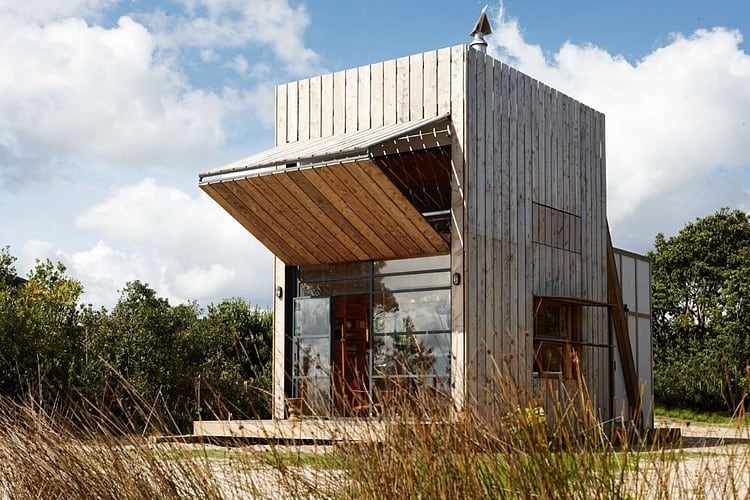
When the wood shutters are opened they reveal the holiday huts windows and glass doors that can remain shut to keep cool weather out, or can be opened wide to let the sun shine in – but not too much sun as the shutters act as shade canopies when in the up position.
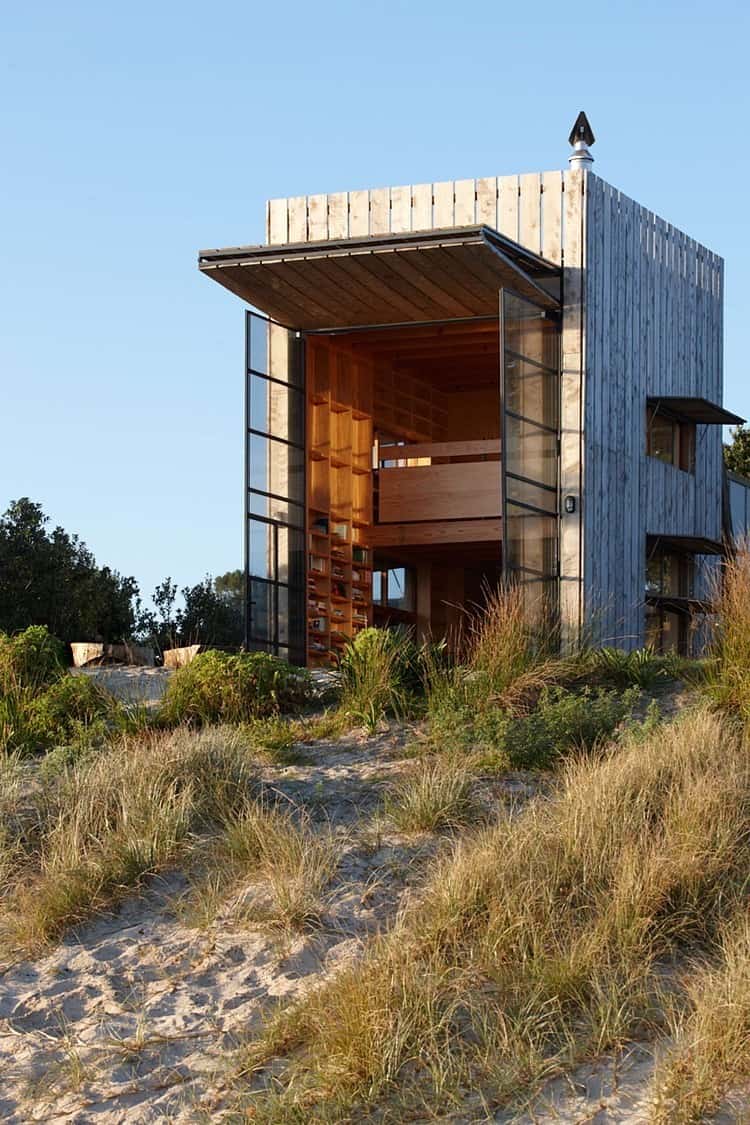
The holiday hut sits on the top of a grassy slope that leads down to the water and with the slight elevation; the hut has a bird’s eye view of the waters beyond.

The shutters on the side windows do not open accordion style so where needed they are installed in multiples rather then single units. Simply turning the wheel mounted on the side of the home a few feet away from the windows opens the shutters. This same winch system operates the large shutters on the front of the hut.
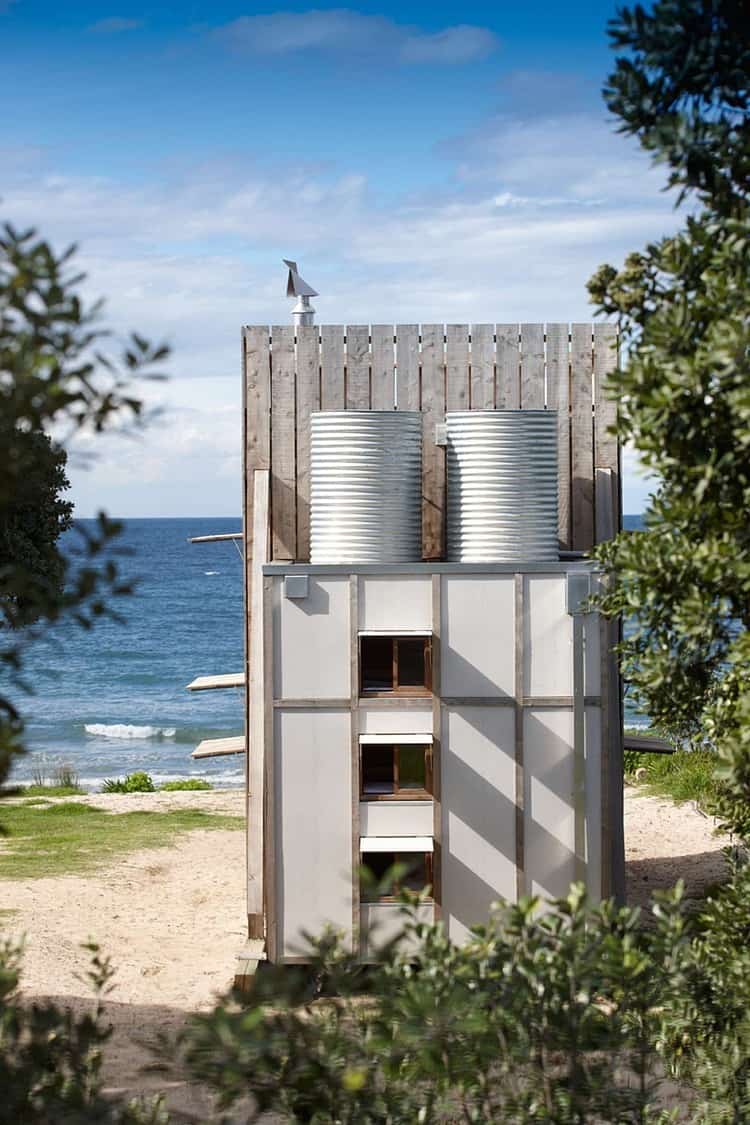
Two tanks sitting on top of the second, smaller cube at the back of the hut are used to collect rainwater for the homeowners “off the grid” hut. They are mounted high so that the indoor plumbing can be gravity fed. This smaller cube is clad in “flat sheet” which is an inexpensive building material used in many traditional New Zealand holiday homes.
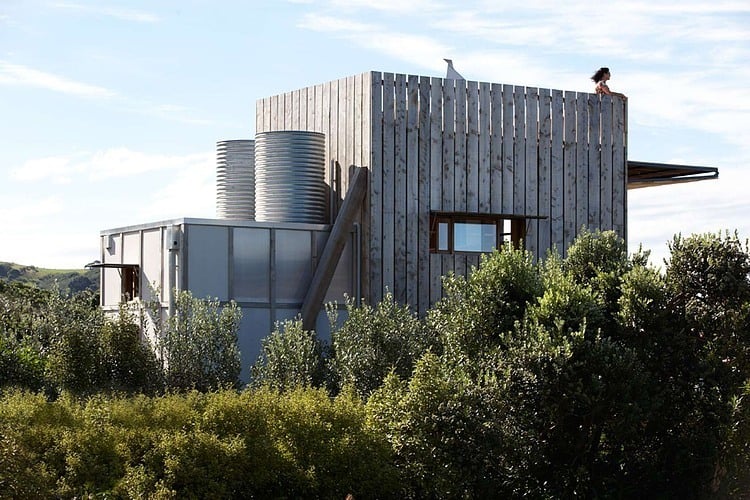
The top of the larger cube hides a roof top deck that is the perfect place for sunbathing during the day or entertaining under the stars in the late evening.
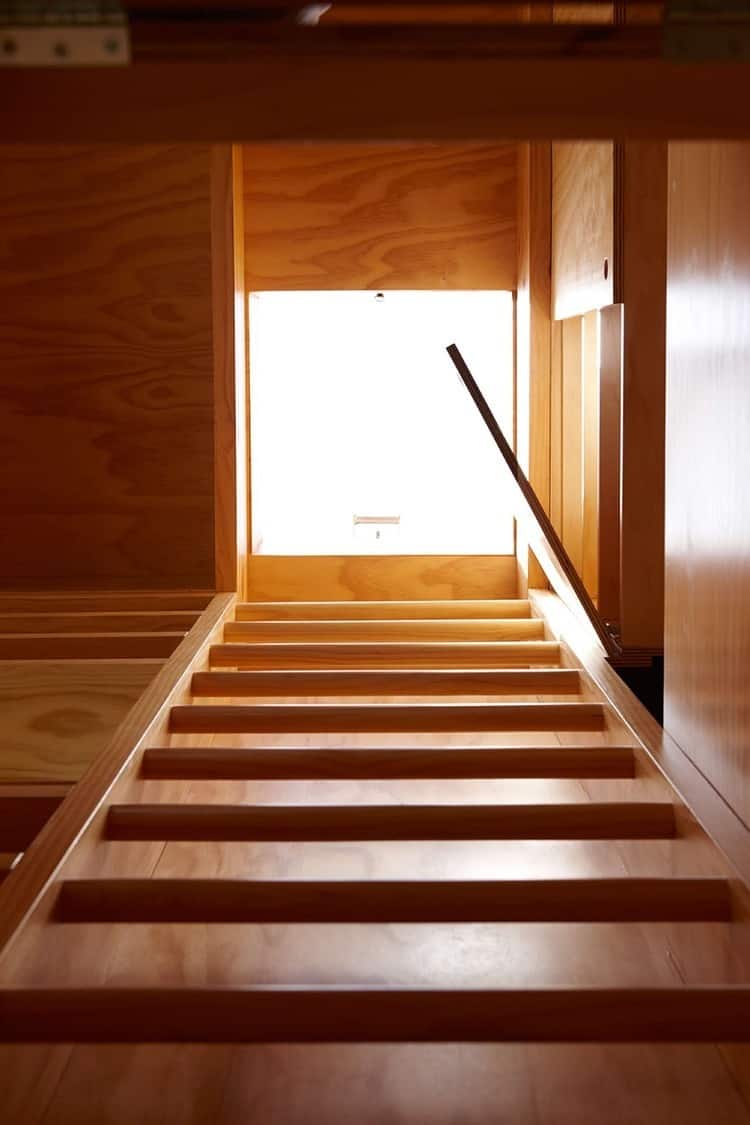
Access to the roof is via a hatch door in the ceiling of the hut. A series of large dowels mounted ladder style create the access to and from the roof.
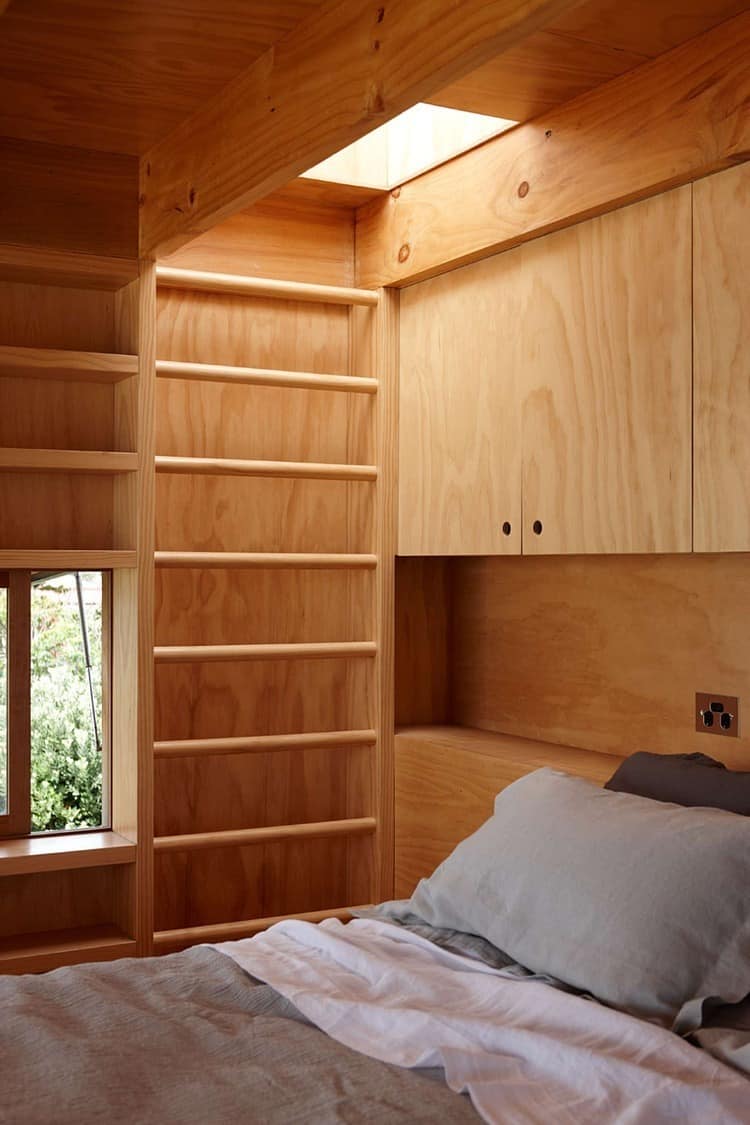
The ladder does not begin in the social zone of the hut but rather from the “Master Bedroom” within the space.

The Master Bedroom is built loft style above the living and kitchen area in the large cube, but the small cube also holds sleeping quarters – bunk bed style. Each of the 3 beds has its own window that looks out landside from the back of the hut, just below the water tanks.
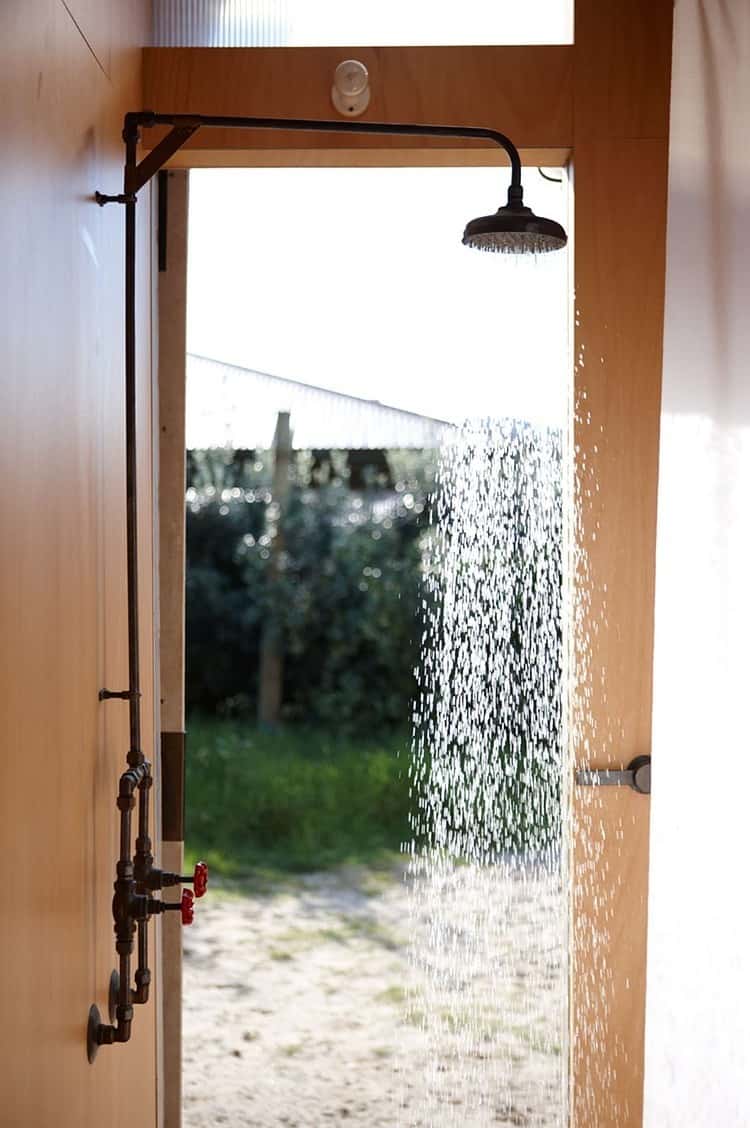
The smaller cube also contains the gravity fed shower room and this room has its own exterior access for washing of sand after a swim in the ocean or a stroll down the beach.
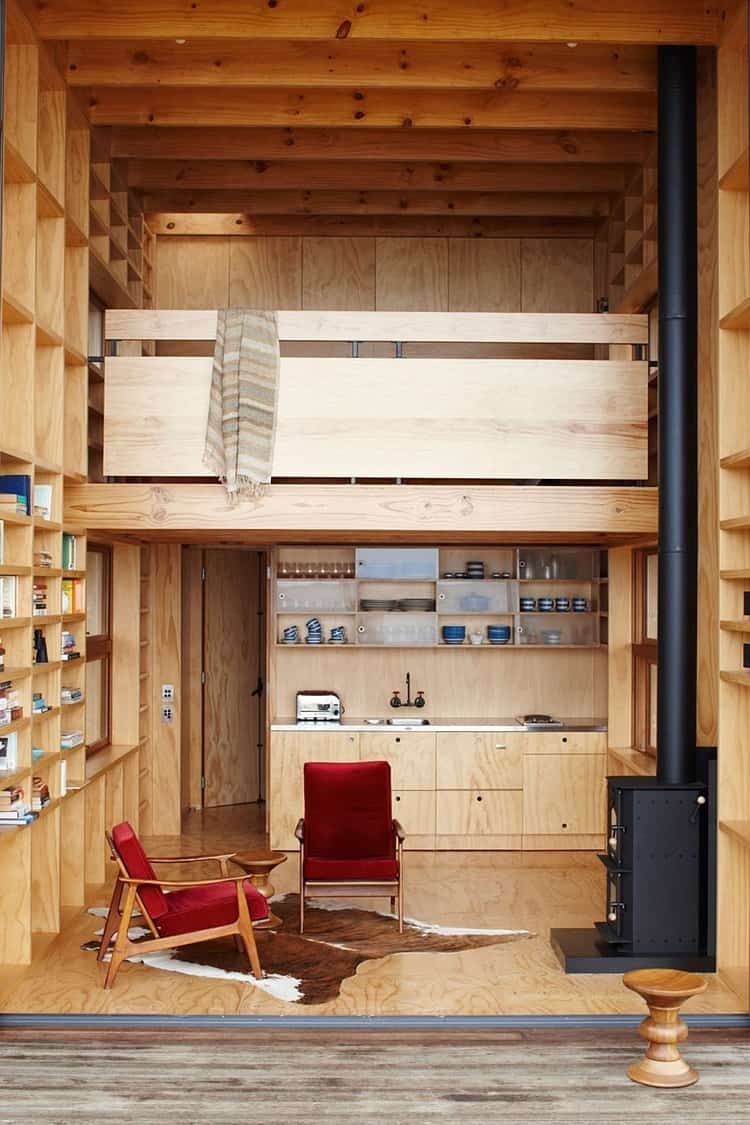
The Bathroom and bunk bed room each lead into the kitchen zone through their appropriate doors. The kitchen is directly below the Master bed loft and directly in front is the double volume living area complete with a free standing wood stove and plenty of shelving for accessories and reading material.
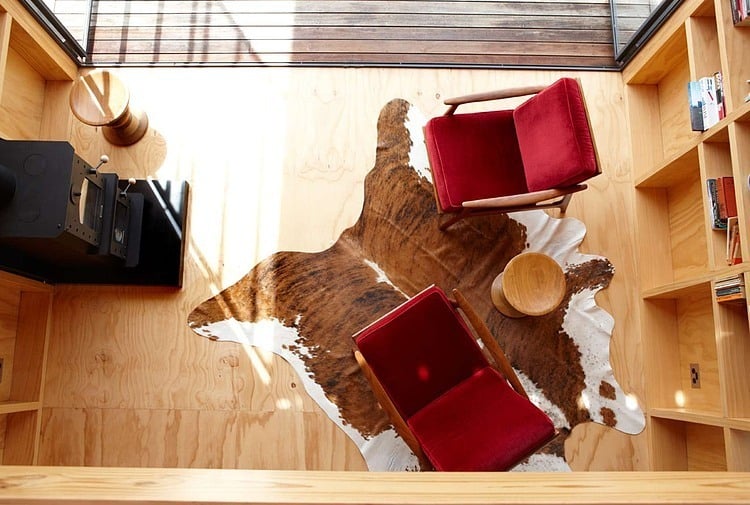
The social area of the Beach Hut is small, but staying indoors is not the reason the homeowners go to their holiday hut, it is only in bad weather or just before or after going to bed that this space becomes a sanctuary, other then that its all about the beach, the ocean and that awesome roof deck.
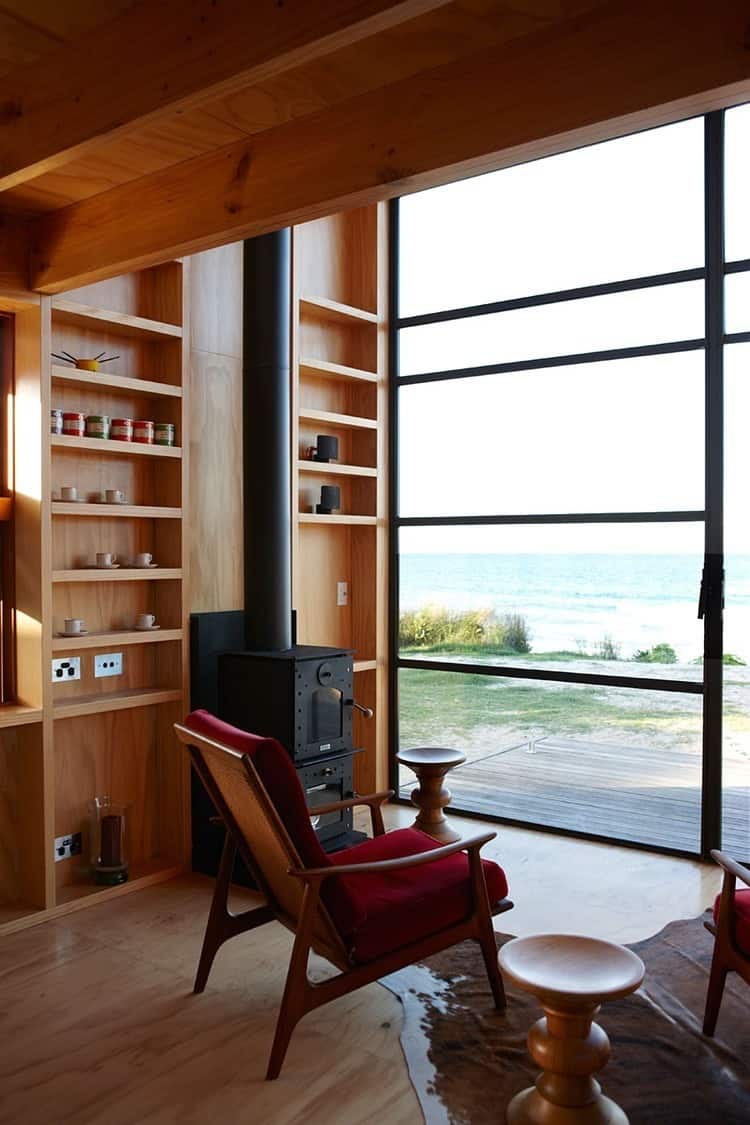
At only 40sq metres of living space, the Beach Hut has been designed with efficiency in mind. Cabinetry toe spaces and secret cubbyholes within the bunk beds all create extra storage space. The Beach Hut is also completely sustainable and employs a worm tank waste system as well as the potable grey water tanks.
Crosson Architects
Photography by Jackie Meiring
